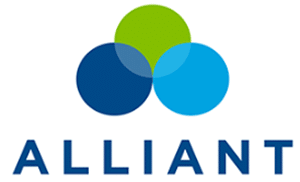Editorial Note: We earn a commission from partner links on Doughroller. Commissions do not affect our authors’ or editors’ opinions or evaluations. Learn more here.
Opening a bank account is normally painless. Either in person or online, the process takes less than an hour. You’re done after entering personal information and setting up an initial deposit.
Sometimes, however, things don’t go according to plan. If you’ve had a bank account closed in the past because of overdraft fees or a prolonged negative balance, you may not be able to open a new one for up to five years. Fear not; many alternatives to traditional bank accounts will allow you to earn interest on your money.
The Best Alternatives to Traditional Bank Accounts
1. Second Chance Checking Accounts
As companies seek to reach out to unbanked or underbanked Americans, more are offering tempting checking account alternatives. These alternatives often offer many features and low fees, though you’ll want to research so you know exactly what you’re getting into.
Second-chance checking accounts offer all of the features of a traditional bank account but are typically offered by a financial company and not a “bank.” Most do not check your ChexSystems report, which greatly increases your chance of approval.

Chime is an award-winning financial app and debit card offering a terrific online savings and checking account for savers. Using the Chime checkbook feature, you can send checks to anyone you wish, fee-free.
There are no account opening fees or monthly maintenance fees; the only fees you’re likely to incur are ATM fees for using a network other than the Chime network.
Another great benefit of Chime is that you can get paid 2 days earlier with direct deposit. Your money doesn’t get stuck in “electronic limbo,” as Chime puts it. Early access to direct deposit funds depends on the payer.
No credit check is required to open a Chime account. When approved, you’ll have access to a Chime Visa® Credit Card, a Spending Account, and an optional savings account should you need one.
Chime Disclosure – Chime is a financial technology company, not a bank. Banking services and debit cards provided by The Bancorp Bank or Stride Bank, N.A.; Members FDIC.
2. Certificates of Deposit (CDs)
CDs generally pay higher rates than savings accounts. But you might be hesitant to tie up your money in CDs. There is a way around that, using what is known as a CD ladder. That’s a strategy where you use multiple CDs with varying maturities. It’s a way of ensuring some of your money is liquid but still earning higher rates of return.

Let’s use Alliant Credit Union as an example. Their High-Yield CDs are currently offering 5.15% APR for 12-month CDs. Now, let’s say you have $30,000 you want to invest. Rather than investing your entire savings in a single CD, you invest 1/12 of your savings each month. That’s $2,500 per certificate.
You invest $2,500 monthly in a 12-month CD, paying about 5.15%. After 12 months, your savings of $30,000 are invested in 12 different CDs.
This means one CD will be maturing every month, giving you a strong measure of liquidity. The maturing CD can even be rolled over into a new 12-month certificate. This strategy enables you to take advantage of rising rates in the future.
Still, another variation is to invest in CDs of different maturities. For example, if you want to invest the entire $30,000 in savings today, you could put five equal shares into different CDs with maturities of one year, two years, three years, four years, and five years. You’d be tying up your money longer, but the return will be higher.
- Check out our post How (and Why) to Create a CD Ladder for a deeper look at CD ladders.
3. US Treasury Securities
Most people are at least remotely aware that Treasury securities exist, but very few individuals invest in them. That’s unfortunate because certain U.S. Treasury securities pay high-interest rates. Moreover, since the US government issues them, they’re considered the safest investments, virtually impervious to default.
US treasury securities come in various terms. They can range from 30 days to 52 weeks for treasury bills, two years to 10 years for treasury notes, and 30 years for treasury bonds.
Treasury bills, being short-term, pay lower rates but are still much better than those of traditional banks. But if you’re willing to invest longer, you can get higher returns on treasury notes.
They can be purchased in denominations of as little as $100 and pay interest every six months. Current rates are around 4.98% for two-year notes and about 4.67% for five-year notes. You’ll be tying your money up longer than you would with a savings account, but the higher interest may be well worth it.
You can purchase, hold, and sell US treasury securities through Treasury Direct.
4. High Dividend Stocks
Stocks are, of course, riskier than traditional savings. They’re not suitable if your primary purpose is creating an emergency fund. But if you’re looking for a higher yield on your savings and a chance at price appreciation, there are plenty of good high-dividend stocks.
NASDAQ.com has a list of dividend-paying stocks, and many can have yields over 5%.
Many well-established companies tend to be less volatile than the overall stock market. High dividend yields tend to offer a measure of protection during market declines.
There’s a bonus here, too. If the dividends paid by the company are considered qualified dividends, there may be no tax liability on them.
To start buying dividend stocks (and any other kind of investing in financial markets), we recommend checking out Ally Invest, an online discount broker. They have low fees and no minimum deposit, so it will be simple to get started.
5. Municipal Bonds
Morningstar reports that the average annual return on municipal bond funds is about 3.5% over the past five years. That’s much higher than yields on traditional bank accounts and many of the alternatives in this article.
However, the best part is that the interest paid on municipal bonds is exempt from federal income tax. If your state has an income tax, and the bonds are issued by an agency within your state, the interest will also be exempt from state income tax. This is referred to as double tax-exempt.
Since bonds are tax-exempt, if you have a combined marginal tax rate of 25%, a bond yielding 3% is equivalent to a 4% return on a taxable investment.
Small investors should usually invest in a municipal bond fund. The fund can diversify between various bonds issued and may even be sorted by state to take advantage of double tax-exempt status.
6. High-Yield Bonds
These are long-term securities issued by corporations. They can run for 20 years or more but pay higher interest rates than traditional banks. In fact, according to MorningStar, the average five-year return on high-yield bonds is around 4%.
Individual bonds usually sell in denominations of $1,000. Some may even require a minimum purchase of $10,000 (10 bonds), making it hard for small investors to diversify. A better alternative may be a high-yield bond fund. For example, the iShares 0-5 Year High Yield Corp Bd ETF has a one-year return of about 3.85%, and that fund is comprised of bonds with maturities of not more than five years, making it lower risk than long-term bonds.
7. Real Estate Investment Trusts
Not many people think of real estate when it comes to savings. But there’s a way you can use real estate as a form of high-yield savings. Real estate investment trusts, or REITs, are mutual funds that invest in real estate. It’s primarily commercial real estate, like retail space, office buildings, warehouses, or large apartment complexes.
REITs pay dividends. They’re legally required to pay 90% of their revenues in dividends to their shareholders. Over the years, returns have been generous.
REITs are publicly traded funds that you can buy and sell anytime.
There is some risk of losing invested capital with REITs, so make sure you’re aware of this fact and fully prepared to invest for the long term. But it’s a way of earning high dividend yields without being so dependent upon price fluctuations of the underlying investment.
What If You Want a Savings Account but Cannot Open One?
When you’re denied a bank account, the first step is to find out why. Under the Fair Credit Reporting Act, banks must explain why they deny accounts.
The most likely reason to be denied an account is that you’ve got an outstanding debt with a bank – often because of unpaid bank fees. But you may also be denied because of a history of frequent overdrafts. Just ask the bank that has denied you exactly what the issue is.
Your next step is likely to check out your ChexSystems report, which you can access at ConsumerDebit.com. Like your credit reports, you can get one free copy of your ChexSystems report every twelve months. The report will show which bank or banks have reported you and why.
If you owe bank money according to your ChexSystems report, you’ll need to either negotiate with the bank you owe to pay off the debt or dispute the report as inaccurate.
If you pay off your debt with a bank, they’ll have to report the account as paid to ChexSystems, which may help your case next time you apply for an account. You can talk to the reporting bank if the report is wrong. If they refuse to deal with the matter, dispute the information with ChexSystems, who is required by law to investigate the claim.
It can take months—or even years—to clean up your ChexSystems report. In the meantime, you may need to take advantage of other bank account options to pay your mortgage on time and avoid hefty transfers or cashier’s check fees.
Using a Tiered Savings Strategy to Get High Yields with Low Risk
If you’re unhappy with the returns you’re getting on your savings, consider setting up a tiered savings plan that looks something like this:
- An emergency fund in a second-chance checking account with a strong APY.
- Excess amounts are invested in high-yield, low-risk investments, like US treasury notes, bond funds, and high-dividend stocks.
- A smaller amount is invested in either REITs or P2P lending platforms to increase your overall savings yield.
That kind of savings portfolio will keep your money relatively safe and allow you to earn much more than a traditional bank account.
A Final Thought on Savings Alternatives to Traditional Bank Accounts
Owning a traditional savings and checking account is critical for managing a successful financial portfolio. In today’s atmosphere, many online savings accounts offer high interest rates with no risk, so if you cannot open one, figure out what you need to do to fix the problem.
In the interim, and in addition to owning a traditional bank account, utilize some or all of the alternatives above to maximize your returns on low-risk investments. The worst thing you can do when rates and inflation are high is park your cash somewhere while earning no rate of return.


